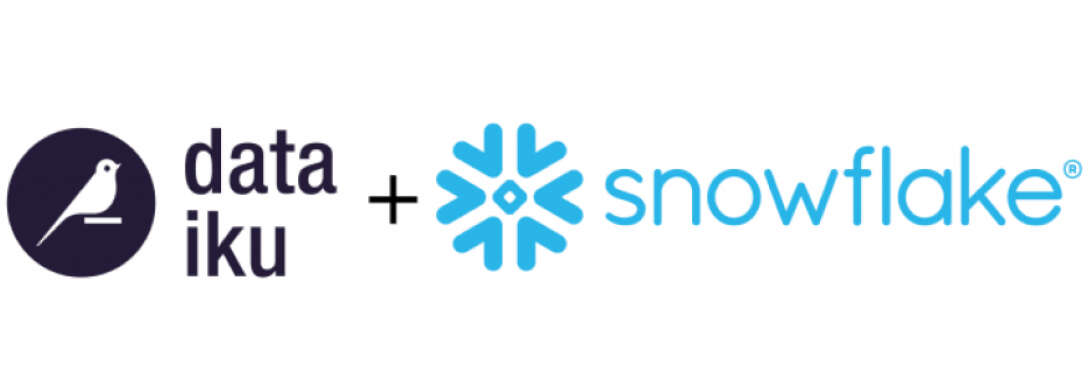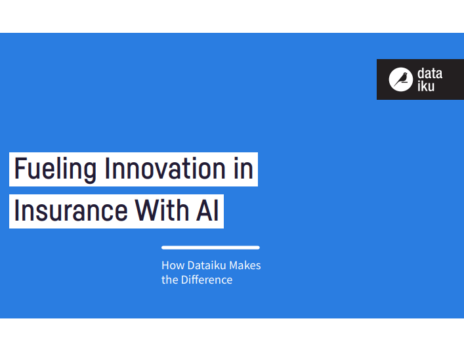
The cloud is driving significant transformation in the insurance industry, extending far beyond simply storage and accessibility. Through cloud technologies, insurers can leverage AI to automate, optimise and transform tasks, tools and processes to an extent that was previously impossible given the limitations of on-prem legacy infrastructure.

The increased sophistication of machine learning (ML) algorithms has grown through the vast expansion in data used to train them, with increased computing power helping to unlock more capabilities. From claims forecasting and fraud protection to ESG risk integration and reporting, the insurance sector is harnessing the capabilities of AI to transform everyday operations and reach value at a quicker pace.
“Capabilities are being brought to market to help not only insurers, but all industries, to extract value out of insights using AI,” says Sully McConnell, head of insurance at data cloud company Snowflake. “I think we’ll see that accelerate and deliver more value quickly.”
The insurance industry’s state of AI maturity is catching up with more digitally advanced areas within financial services. Greater use of automation is empowering insurers to scale at speed and liberate human talent to prioritise value-added activities, while also enhancing risk management and ensuring compliance in an increasingly complex and demanding regulatory landscape. But successful implementation requires increased access to data, careful consideration of technical capabilities and the human aspects of change management if it is to succeed.
Transforming insurance processes with AI
“You don’t solve a problem simply by applying AI. You need very specific techniques and methods which may involve AI components, be it an anomaly detection algorithm, a recommendation engine, or a large language model that’s synthesising information,” says John McCambridge, global solutions director of financial services and insurance at Dataiku.
“Every function in insurance is trying to introduce data science, ML and analytics into how they approach their particular function within the organisation,” adds McConnell. “The big ones still tend to be simplifying the claims process and trying to optimise the organisation’s claim handler bandwidth. Ultimately, I believe advanced carriers will leave no stone unturned in trying to apply analytics to business processes.”
AI helps to automate and expedite the claims process, involving initial assessment and processing, which leads to faster payouts and improved customer satisfaction, as well as helping insurers in assessing risks and determining appropriate premiums for policyholders.
“Risk teams operate where there’s a lot of quieter work going on, with very powerful pieces of AI. More generally across analytics, data, pipelining and automation work, Audit teams are becoming more effective and can process large amounts of data quickly, replicating their efforts more consistently,” says McCambridge.
Algorithms can also help to identify suspicious patterns and anomalies in data that allow insurers to detect and prevent fraudulent activities. Insurers use traditional and AI models for efficient fraud detection. These models rely on the previous cases of fraudulent activity and apply statistical techniques to analyse them. Predictive modelling techniques are applied to analyse and filter fraud instances and identify links between suspicious activities, which helps to recognise fraud schemes that previously went unrecognised.
Alongside enhanced fraud detection, predictive maintenance can also help to anticipate and prevent losses through data analysis from sensors and devices, particularly in property and casualty insurance.
Enhancing customer insights
“There’s so much interesting third-party data now that you can build a very broad profile of your customer to get insights into potential future loss costs with data science models to bring that into the underwriting process,” says McConnell.
Automated underwriting could also develop to involve automating the entire process to enhance efficiency and reduce the need for manual work, giving teams more time to focus on value-added opportunities and a higher standard of customer responsiveness.
AI-powered chatbots and virtual assistants are enhancing customer interactions by providing real-time assistance, answering queries, and guiding customers through policy information and claim procedures. It can help to personalise policies by analysing customer data to create tailored insurance policies, which contributes to further customer satisfaction. But a pragmatic view of AI applications recognises that AI is not a magic solution, but rather a tool to drive innovation, efficiency and competitive edge in these areas through value-added capabilities.
AI is not a magic solution for the insurance industry
“AI should be a continuation of other components involved in a data project, be that data wrangling and accessing computing resources, analytics, data quality, applying business rules, dashboarding insights, and so on,” says McCambridge. “All of these components need to be brought together to deliver a project effectively using AI.”
“We’re at the cusp of an interesting set of capabilities,” adds McConnell. “Sophisticated carriers have strong data and analytics teams and have been able to obtain insights relatively well. The challenge in recent years has been operationalising them or embedding a model in a transactional process.”
Ingredients for AI maturity
A well-architected cloud environment gives employees access to data and compute. Dataiku and Snowflake’s AI solution is an example of a powerful mechanism to leverage data and compute to deliver insights and outputs across all personas in an organisation.
“The barrier to AI maturity is not people, it’s process,” says McCambridge. “You can’t expect people to effectively solve problems without access to tools for problem-solving or the necessary data. You need data, compute, and a way of leveraging it.”
These ingredients for AI maturity require leaders to instil a data-driven culture through the organisation, bringing in the right technology and ensuring that existing processes are effective in allowing technologies to be leveraged properly.
“[AI maturity] has to be driven by the organisation’s culture such that the decision-makers and implementers in the organisation feel aligned and clear about what they’re trying to achieve,” McCambridge continues.
A common tooling environment
The automating of claims and underwriting workflows is evolving the role of subject matter experts as a result. Some tasks previously handled by subject matter experts, such as manual data analysis, are being automated, but the need for subject matter experts remains crucial for refining AI models, interpreting complex cases, ensuring ethical and legal compliance, and maintaining an in-depth understanding of the insurance landscape.
Close collaboration between operational staff and data scientists is essential for insurers to scale AI projects. Removing silos and granting access to digital tools and knowledge is crucial.
Similarly, isolating a centre of excellence and populating it solely with data scientists or analysts will not provide the necessary value and may expose new challenges. Ensuring the technology accessible to the centre of excellence is also available to others is essential to avoid isolating and constraining effectiveness.
A tooling set-up that allows insurers to leverage traditional and ML capabilities is the most effective solution.
Dataiku and Snowflake offer a claims modelling solution that provides opportunities to build a generalised linear model (GLM) in parallel to an ML model, using ML and AI capabilities to augment an insurer’s creation of a traditional model or vice versa. This allows insurers to work faster with greater confidence and harness the opportunities to explore new capabilities, without being isolated from technology or data, or being slowed down by manual, mundane tasks.
Insurers have been effectively using analytics and statistical analysis since the industry was founded, and AI is merely an extension of these capabilities, which enables insurers to utilise time and talent more effectively, unlocking value-added opportunities at a quicker pace.








